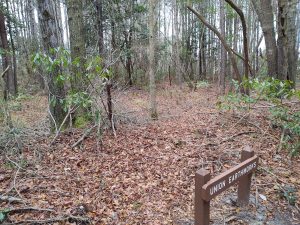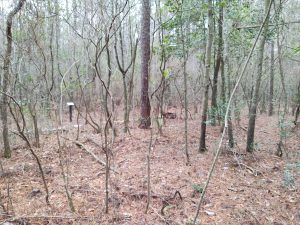The Bull Pen at Bentonville
It is the favorite part of one of my favorite battlefields. It was the scene of desperate fighting, a touch and go affair that could have gone either way. There were countless acts of bravery, Medals of Honor were earned, and the fate of the battle hinged on it. The Bull Pen at Bentonville should be as famous as the Sunken Road at Antietam, the Hornet’s Nest at Shiloh, or Gettysburg’s Little Round Top.
Fought March 19-21, 1865 in the piney woods and flat sandy soil of eastern North Carolina, it was the largest battle ever fought in the state. Gen. Joseph E. Johnston hoped to destroy an isolated wing of Gen. William T. Sherman’s command, and came close to doing so.
On March 19 Confederate forces launched a surprise attack, driving back Union troops near the town of Bentonville. A Federal division of three brigades under Gen. James Morgan took up position in a wooded area and hastily dug trenches. Morgan’s men were on the army’s right flank, and isolated from support.

Moving into position in front of them was the division of Gen. Robert F. Hoke with four brigades, all combat veterans. They charged twice, coming within yard of the Union defenders in their shallow trenches. A bit of hand to hand combat even ensued. The combat was intense and the Federals began to run low on ammunition.
While Hoke was repulsed in their front, the sounds of bullets whizzing and rebel yells from what had been their rear alerted them to another Confederate attack – this time four understrength brigades from the Army of Tennessee under Gen. D.H. Hill.
Incredibly, the Union defenders got on the outside of their earthworks and defended them from the back, shooting into what had been their rear. This rugged defense and the timely arrival of Gen. William Cogswell’s XX Corps brigade led to the failure of this second Confederate attack. The fighting ended that day with Morgan still holding his position – an area styled “the Bull Pen” by his men because they were surrounded Confederates on three sides and a swamp on the fourth. Morgan’s stand is truly one of the most incredible incidents of the war.

A North Carolina State Historic Site since 1957, Bentonville has expanded greatly in recent years thanks to its partner group, the Friends of Bentonville Battlefield, and the American Battlefield Trust. The Bull Pen was preserved in 2003 but dense terrain prevented public access until last fall. It is now part of the park’s driving tour.


Recently park staff have created a trail through the site, placed markers, and connected it to the state’s Mountains-to-Sea Trail. Today it is possible to walk this ground that witnessed this amazing event and see the original trenches. The battle’s 159th anniversary is also approaching, and the site is having special events. Learn more here:
Bentonville Battlefield | NC Historic Sites
The author thanks Park Operations Manager Derrick Brown for his assistance.
Thanks Bert, nice piece … another reminder that Confederate armies were still very dangerous animals late in the war.
Nice! Never been but planning on it following the SCWH meeting in Raleigh this June. Great write up. Really looking forward to getting out there now.